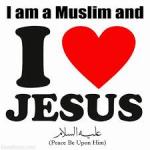المثال الاول :اقتباس نص اشعياء 27: 1 و مزمور 74: 13-14 .
نقرا من سفر اشعياء الاصحاح 27:
1.فِي ذلِكَ الْيَوْمِ يُعَاقِبُ الرَّبُّ بِسَيْفِهِ الْقَاسِي الْعَظِيمِ الشَّدِيدِ لَوِيَاثَانَ، الْحَيَّةَ الْهَارِبَةَ. لَوِيَاثَانَ الْحَيَّةَ الْمُتَحَوِّيَةَ، وَيَقْتُلُ التِّنِّينَ الَّذِي فِي الْبَحْرِ .
النص من ترجمة الملك جيمس :
In that day the LORD with his sore and great and strong sword shall punish leviathan the piercing serpent, even leviathan that crooked serpent; and he shall slay the dragon that is in the sea.
النص بالعبرية :
בַּיֹּום הַהוּא יִפְקֹד יְהוָה בְּחַרְבֹו הַקָּשָׁה וְהַגְּדֹולָה וְהַֽחֲזָקָה עַל לִוְיָתָן נָחָשׁ בָּרִחַ וְעַל לִוְיָתָן נָחָשׁ עֲקַלָּתֹון וְהָרַג אֶת־הַתַּנִּין אֲשֶׁר בַּיָּֽם׃ ס
و نقرا من سفر المزامير الاصحاح 74 :
13 أَنْتَ شَقَقْتَ الْبَحْرَ بِقُوَّتِكَ. كَسَرْتَ رُؤُوسَ التَّنَانِينِ عَلَى الْمِيَاهِ.
14 أَنْتَ رَضَضْتَ رُؤُوسَ لِوِيَاثَانَ. جَعَلْتَهُ طَعَامًا لِلشَّعْبِ، لأَهْلِ الْبَرِّيَّةِ.
النص من ترجمة الملك جيمس :
You broke the heads of Leviathan in pieces, And gave him as food to the people inhabiting the wilderness.
النص بالعبرية :
74:13 אַתָּה פֹורַרְתָּ בְעָזְּךָ יָם שִׁבַּרְתָּ רָאשֵׁי תַנִּינִים עַל־הַמָּֽיִם
74:14 אַתָּה רִצַּצְתָּ רָאשֵׁי לִוְיָתָן תִּתְּנֶנּוּ מַאֲכָל לְעָם לְצִיִּֽים
اقول: هذه النصوص (و بالاخص اشعياء 27: 1 ) هي اقتباس مباشر من نصوص اوغاريتية خاصة بالاله الوثني الكنعاني بعل و سحقه للوياثان في حوار جرى بينه و بين الالهة الوثنية موت !
اولا : اقوال النقاد و تصريحهم بالاقتباس و التشابه
نقرا من كتاب The eschatologization of the divine conflict with the dragon and the sea الفصل الرابع God's conflict with the dragon and the sea لجون داي الفصل الرابع الصفحة 142 :
The dragon-conflict in Isaiah 27:1and related material in the ‘Isaiah Apocalypse’
Isaiah 27:1
On that day the Lord with his hard and great and strong sword will punish Leviathan the twisting serpent, Leviathan the crooked serpent, and he will slay the dragon that is in the sea. As has frequently been pointed out, these words from the proto-apocalyptic work in Is. 24-7 bear a very strong resemblance to those in the Ugaritic Baal myth, where Mot addresses Baal as follows: ktmhs. Itn. btn. brh. tkly. btn. `qltn ‘Because you smote Leviathan the twisting serpent (and) made an end of the crooked serpent...’ (CTA 5.I.1-2 = KTU 1.5.I.1-2). Again, in CTA 3.IIID.37-9 (= KTU 13.III.40-42), Leviathan the crooked serpent is spoken of as a dragon as in Is. 27:1, l’istbm. tnn. ‘istm[ ]mhst. btn `qltn slyt. d. sb`t. r’asm ‘Surely I lifted up the dragon, I... (and) smote the crooked serpent, the tyrant with the seven heads.’ The close similarity is all the more remarkable both in view of the time-scale involved and because the word ` a qallaton ‘crooked’ which is here paralleled in Ugaritic is found nowhere else in the Old Testament (though the plural of the verb `ql [Hab. 1:4] and the adjective `qalqal [Judg, 5:6, Ps. 125:5] are so attested, and cf. Rahab which appears as nahas bariah ‘twisting serpent’ in Job 26:13). The striking parallelism between the relatively late text in Is. 27:1and the Ugaritic texts almost a millennium earlier is a reminder that the closeness of the language of Old Testament texts to that of the Ugaritic texts is not necessarily an indication of an early date for the Old Testament passages in question. Quite often the parallels are in relatively late texts.
The Ugaritic texts cited above make it clear that Is. 27:1 is describing one monster, not three, as has sometimes been supposed. What is referred to in Is. 27:1 parallels the event referred to in Is. 24:21, ‘On that day the Lord will punish the host of heaven, in heaven, and the kings of the earth, on the earth.’ The reference to ‘the host of heaven’ in this parallel verse has sometimes been thought to indicate that the monster references in Is. 27:1 allude to three constellations, Serpens, Draco and Hydra.2 However, whereas Is. 24:21 refers to the kings of the earth as a whole
143
together with their angelic princes, it is probable that the reference to the defeat of Leviathan in Is. 27:1 alludes to the downfall of one particular hated power of the time, in view of the use of the sea monster imageryto refer to particular hostile nations elsewhere in the Old Testament
https://jbburnett.com/resources/day_...ict-dragon.pdf
و هذا يعني ان النص الاوغاريتي سبق نص اشعياء في تدوينه بالف سنة كما ذكر جون داي فلا مجال للقول بان النص الاوغاريتي قد اخذ من اشعياء !!!
و نقرا من The IVP Bible Background Commentary: Old Testament الصفحة 510 :
41:1. Leviathan. Leviathan has often been identified as a crocodile, which were found mostly in Egypt (where it symbolized kingly power and greatness) but also sparsely in Palestine. However, the multiple heads in Psalm 74:14 and the fiery breath here in verses 19-21 make the crocodile identification difficult. Alternatively Leviathan has been depicted as a sea monster (see Ps 74:14; Is 27:1). Support for this is found in Ugaritic texts which contain detailed descriptions of a chaos beast, representing the seas or watery anarchy, in the form of a many-headed, twisting sea serpent who is defeated by Baal. There is a close affinity between the description of Leviathan in Isaiah as a “coiling serpent” and the Ugaritic Baal epic, which speaks of how the storm god “smote Litan the twisting serpent.” In both cases there is a sense of the god of order and fertility vanquishing a chaos monster. Several other passages in the Old Testament mention Leviathan, but most of them, like Psalm 74:14, speak in terms of God’s creative act that establishes control over watery chaos (personified by the sea serpent).
file:///Users/MacbookPro/Downloads/Bible_Background_Commentary--Old_Testame (1).pdf
ثانيا : مقارنة نص اشعياء 27 : 1 مع النص الاوغاريتي الخاص ببعل ( بالترجمة الانجليزية ) :
النص الاوغاريتي :
Because you smote Leviathan the twisting serpent (and) made an end of the crooked serpent.
نص اشعياء 27: 1 :
In that day the LORD with his sore and great and strong sword shall punish leviathan the piercing serpent, even leviathan that crooked serpent; and he shall slay the dragon that is in the sea.
التشابه واضح و لا يمكن انكاره
ثالثا : مقارنة تاريخ تدوين كل من النصين .
تاريخ تدوين سفر اشعياء :
ترجع بعض اصحاحات سفر اشعياء الى القرن الثامن قبل الميلاد و البعض الاخر الى القرن السادس قبل الميلاد، و ينتمي الاصحاح 27 الى المجموعة التي ترجع الى القرن السادس قبل الميلاد .
نقرا من الترجمة الرهبانية اليسوعية الصفحة 1513- 1514:
(( غير ان تعدد المؤلفين لا يحول دون التكلم على وحدة الكتاب . شرط ان يبحث عن هذه الوحدة في تواصل يمتد عدة قرون و في استمرار بعض المواضيع . و اوضح دليل على تعدد المؤلفين يظهر في الفصل الاربعين حيث يبدا مؤلف يقال له سفر اشعيا الثاني فبدون اي تمهيد نرى انفسنا منقولين من القرن الثامن الى حقبة الجلاء القرن السادس..... و اخيرا فان مجموعة الفصول 24- 27 المسماة رؤيا اشعيا بعيدة جدا عن عقلية القرن الثامن بعيدة جدا عن عقلية اهل القرن الثامن و تصوراتهم ))
تاريخ النص الاوغاريتي الخاص ببعل (دورة بعل) :
يرجع تاريخ النصوص المنقوشة في الالواح الاوغاريتية الى منتصف الالفية الثانية قبل الميلاد .
نقرا من الموسوعة البريطانية :
((Knowledge of Baal’s personality and functions derives chiefly from a number of tablets uncovered from 1929 onward at Ugarit (modern Ras Shamra), in northern Syria, and dating to the middle of the 2nd millennium BCE. The tablets, although closely attached to the worship of Baal at his local temple, probably represent Canaanite belief generally. Fertility was envisaged in terms of seven-year cycles. In the mythology of Canaan, Baal, the god of life and fertility, locked in mortal combat with Mot, the god of death and sterility. If Baal triumphed, a seven-year cycle of fertility would ensue; but, if he were vanquished by Mot, seven years of drought and famine would ensue.))
https://www.britannica.com/topic/Baal-ancient-deity
و نقرا من &'Ugarit and the Bible: An Introduction and Case Study الصفحة 4 :
((Excavations of the Grand Palace began in 1948 and have led to the discovery of several different archives, including historical documents, administrative documents and correspondence, documents about the capital, economic texts, and legal documents (IDB, ABD). While the administrative documents are mostly in Ugaritic, international letters and most legal texts are in Akkadian, which apparently was the international language of its time. In religious texts, those that deal with local belief and practice are predominantly in Ugaritic while those that are borrowed from Mesopotamia are in Akkadian. All told, nine different languages are attested in Ugaritic inscriptions, mostly from the period between 1400-1186 (OEANE, “Ugaritic Inscriptions”). The palace, which covers about 3 acres (OEANE), was a multi-story structure made mostly of cut stone but also of uncut stone, wood, and clay (ABD). Other, smaller palaces have also been excavated and have contained smaller archives (ABD). ))
https://www.academia.edu/6274239/Uga...and_Case_Study
هذا وصلى الله على سيدنا محمد و على اله وصحبه وسلم
يتبع










 رد مع اقتباس
رد مع اقتباس


















المفضلات